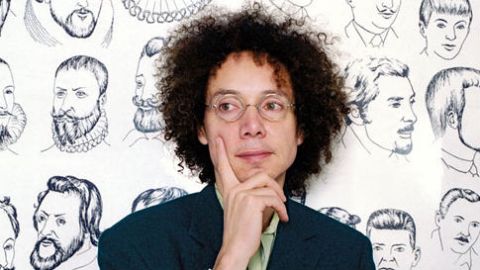How to See the World Like Malcolm Gladwell

There is a point in every child’s development where he begins to realize that the content of his parents’ minds is different than that in his own, says author Malcolm Gladwell. Yet adults often forget this fundamental realization, says Gladwell. “We always fall back on this notion that the rest of the world, their personalities and their minds, are set up the way ours are.”
In his Big Think interview, Gladwell, the author of bestsellers “The Tipping Point,” “Outliers,” and “Blink,” talks about how this way of looking at the world has informed his career as a writer: “My writing is always premised on the fact that the minute you look below the surface things are a.) different than what you thought they would be and b.) different from your own experience.”
This fascination with the way other people see the world was probably informed by his childhood, Gladwell speculates. He remembers watching his mathematician father work, deeply engaged in esoteric formulas that he couldn’t possibly begin to understand. “I had to deal with this paradox as a child of looking at this person whom I loved almost more than anyone else and at the same time acknowledging that I had no understanding of what he thought about all day long. And that is something I never got over as a kid,” says Gladwell. “He would sit at his desk doing these equations on a piece of paper and I realized I couldn’t even begin to appreciate what that felt like. I suppose in one way or another a lot of my career has been an attempt to answer that question in a variety of different contexts.”
Gladwell also offers some advice for aspiring creative-types. The major difference between creative and analytic people, he says, is the way they process seemingly superfluous information. “People in non-creative universes … see something and they’ll say ‘Is it relevant to what I’m doing?’ And if it’s not they should push it aside and focus on what their task is.” But with creative people, their imaginations are messy because they don’t want to throw anything out:” “Why don’t they want to throw anything out? Because they believe on some level that there is always something of interest or value in whatever they encounter. They know enough about how mysterious and serendipitous and unpredictable the creative process is that they realize that it’s dangerous to kind of make too hasty a judgment about the value of anything that they come across.”
To cultivate your creativity, then, you have to avoid the normal human tendency to edit, Gladwell says. “Embracing messiness and understanding its contribution to the creative process is something that writers and creative types, artists, whatever have got to cultivate, have to learn to be comfortable with because it goes against a lot of our kind of instincts and training as educated people.”





